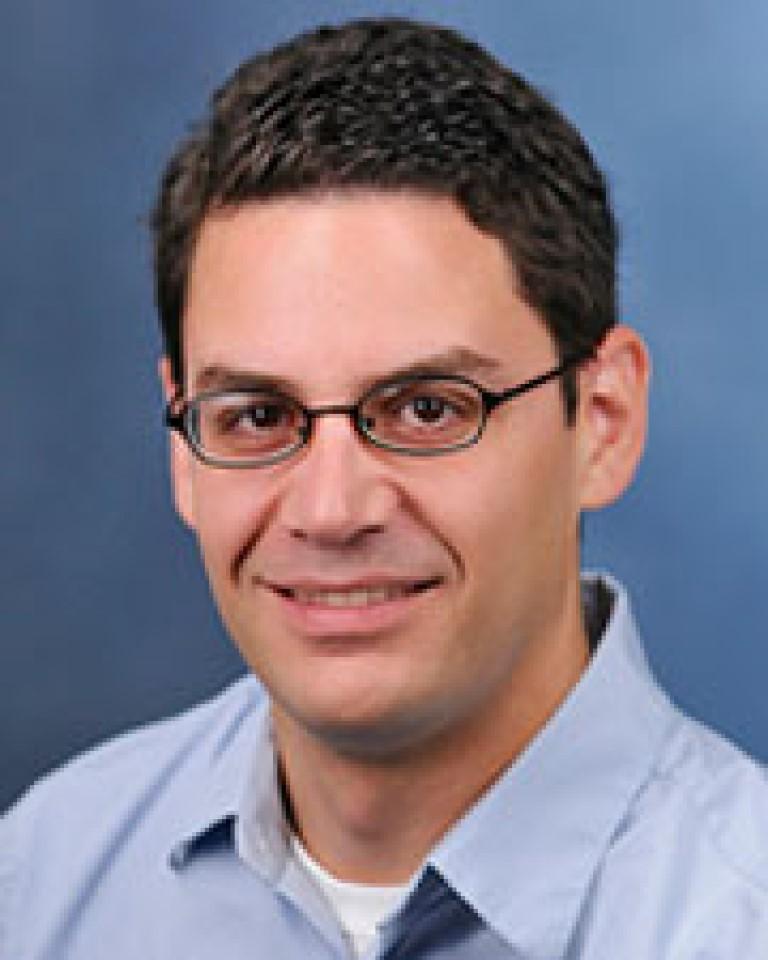Jonathan Brumberg

Mentor Spotlight | April 2017
Department: Speech-Language-Hearing
Describe your work in a few sentences that we can all understand: My work focuses on understanding how our brains represent speech and language, and then converting those ideas into movements of the vocal tract – the jaw, lips and tongue. In my lab we use this information to create brain-computer interfaces for assistive communication technology to help individuals who are paralyzed regain the ability to communicate.
Q: How did you first get interested in doing research?
A: I volunteered in a psychology research lab immediately after graduating from college where we used EEG – electroencephalography – to understand the limits of human visual attention. When I look back at that experience, I realize that I learned a number of skills that I still use in my work today – EEG recordings, human subjects studies, statistical analysis, and computer programming for experiments. This volunteer opportunity eventually led to a paid position in another psychology research lab studying visual perception. As a computer science undergraduate, I thought it might be possible to program a computer to simulate human responses to the visual psychology experiments we were conducting. It turns out this is a really hard problem, but one I was fortunate enough to study in graduate school.
Q: What do students in your discipline learn by doing research that they wouldn’t learn by just taking classes?
A: Brain-computer interfaces are generally not covered in any classes, undergraduate or graduate, and involves knowledge of a set of interdisciplinary skills including clinical assessment and intervention with assistive communication devices, computer programming, engineering, human subject experiments, and understanding the brain regions involved in speaking. Students who work in my lab learn how to conduct EEG experiments where we record the brain activity of a range of participants including those with severe neuromotor impairments such as amyotrophic lateral sclerosis (ALS), or Lou Gehrig’s disease. They also learn about how the vocal musculature is controlled by the brain, and how we might replace a human vocal tract with an artificial simulation using speech synthesizers. Students in my lab gain a very broad academic perspective by working very closely with other lab members who are undergraduate and graduate students from Speech-Language-Hearing, Psychology, Neuroscience, Computer Science and Engineering.
Q: What do you find to be the most exciting part of doing research or creative work? What makes this line of work meaningful and interesting to you?
A: The most meaningful part of this research is working with individuals with severe neuromotor impairments and paralysis. Not only are these individuals involved in our projects as study members, they become invaluable advisors to help us understand what works and what doesn’t from a user perspective. They also understand that research is a long-term process and are happy to contribute their time if it means a possible improvement for others in similar conditions. It is very easy to get caught up in the science-fiction / technology aspect of our work, but at the end of the day, there are real people who may one day benefit from the results of our devices, or devices of our colleagues.
Q: What advice do you have for undergraduates interested in doing research in your field?
A: I recommend branching out from your own major or program and take courses in computer programming, speech and language sciences, neuroscience, psychology research methods, logic, and theory of mind (from Philosophy). If they’re really interested, try working with simple circuits and robots – even those robotic Lego packages. Not only will coursework in these areas provide a very broad education, but it will give students an ability to see things from the perspective of another person or field of study. I also highly recommend volunteering in a skilled care environment, or otherwise finding a way to work with people who have severe speech and motor impairments. The experience can be eye-opening, very meaningful, and can help to inform new developments in BCI from a user-centered perspective.
Q: For many students, doing research or a larger creative project is the first time they have done work that routinely involves setbacks and the need to troubleshoot problems. Can you tell us about a time that your research didn’t go as expected? Or about any tricks or habits that you’ve developed to help you stay resilient in the face of obstacles?
A: All the time! It happens so often it is hard to pick just one example, but the most important thing is that with each setback, we are able to learn what worked and what didn’t to help refine our research and devices into something that works all the time. One example occurred when I was in graduate school – I was working on my first BCI project to try and use brain activity to control a speech synthesizer. When working with the electrical activity of the brain, it is very important to eliminate all sources of possible electrical noise – including the 60 Hz powerline artifact. I had spent weeks refining and debugging the BCI software, so I knew the problems I was seeing wasn’t the software and since our setup was isolated from the main power, I ruled out the 60 Hz artifact. However, when I looked at the data – the 60 Hz artifact was present and interfering with the BCI software. After a few more days I discovered that the computer I was using, though isolated from the main power, was connected to a printer that was connected to the main power and turned on. This one connection was a simple oversight but had an enormous impact on our study. Though very frustrating at the time, I know that I’ll never forget to check all the connections on my experimental computers!
Q: How do you spend your time outside of work?
A: I spend most of my time with my family and our two rowdy dogs!